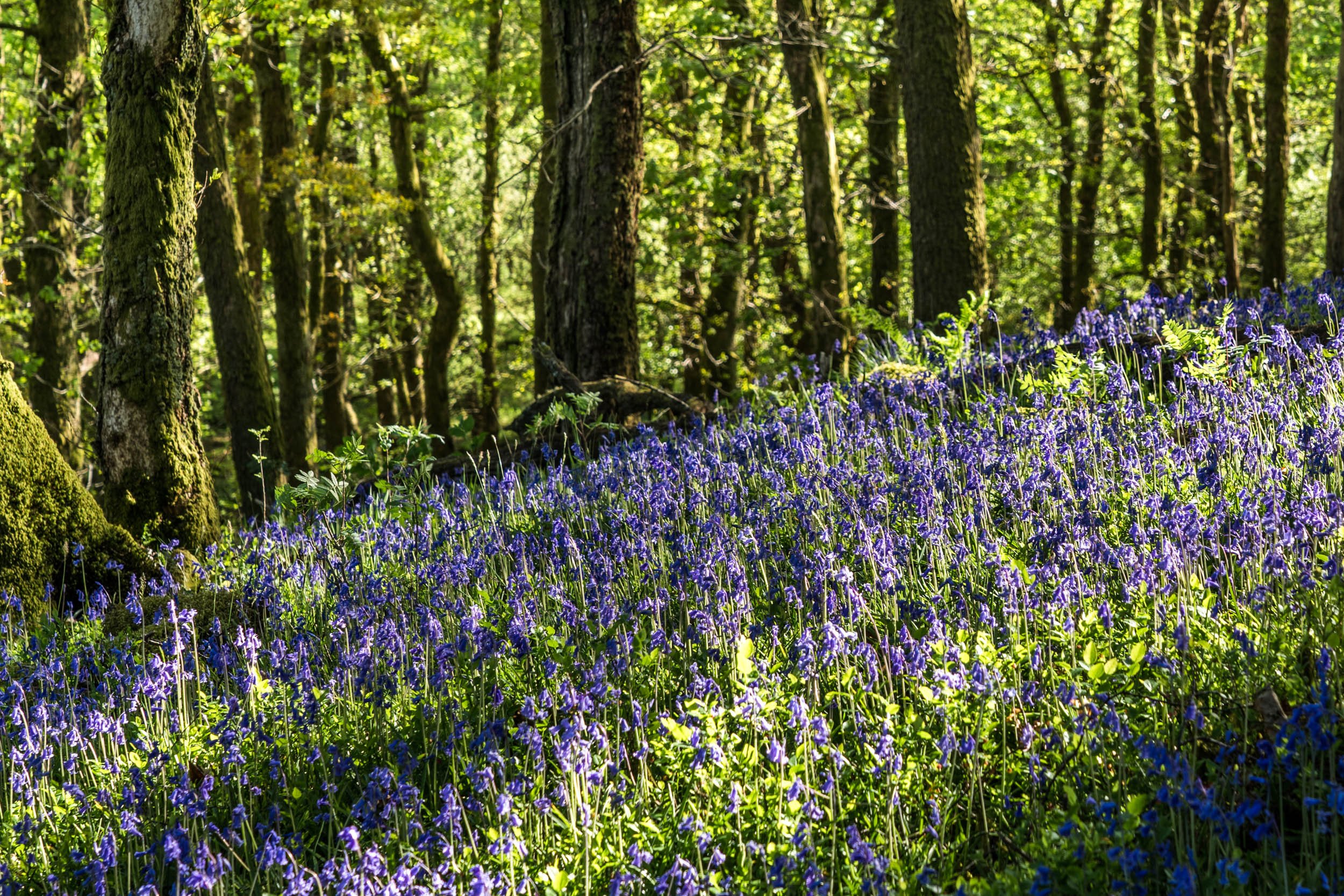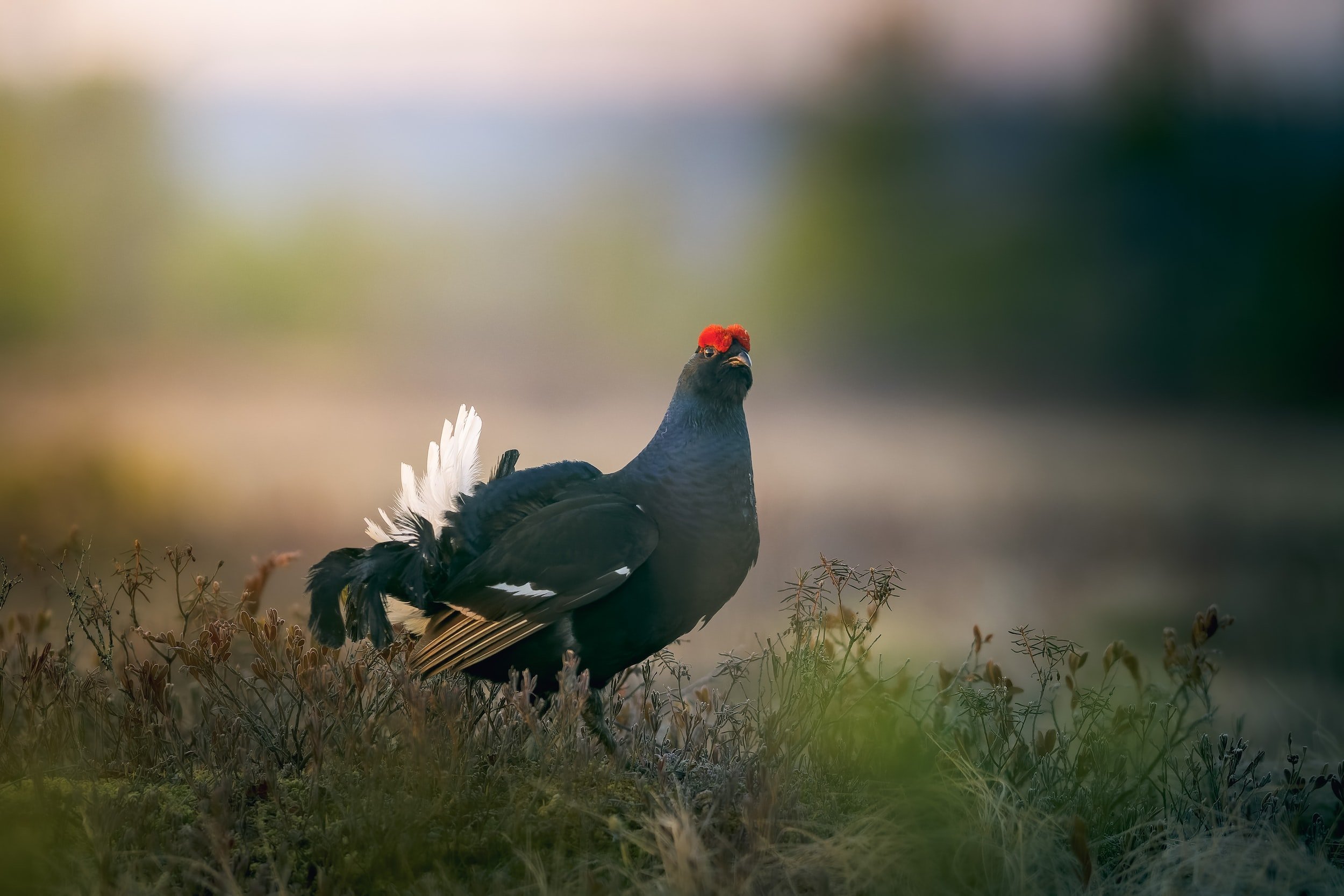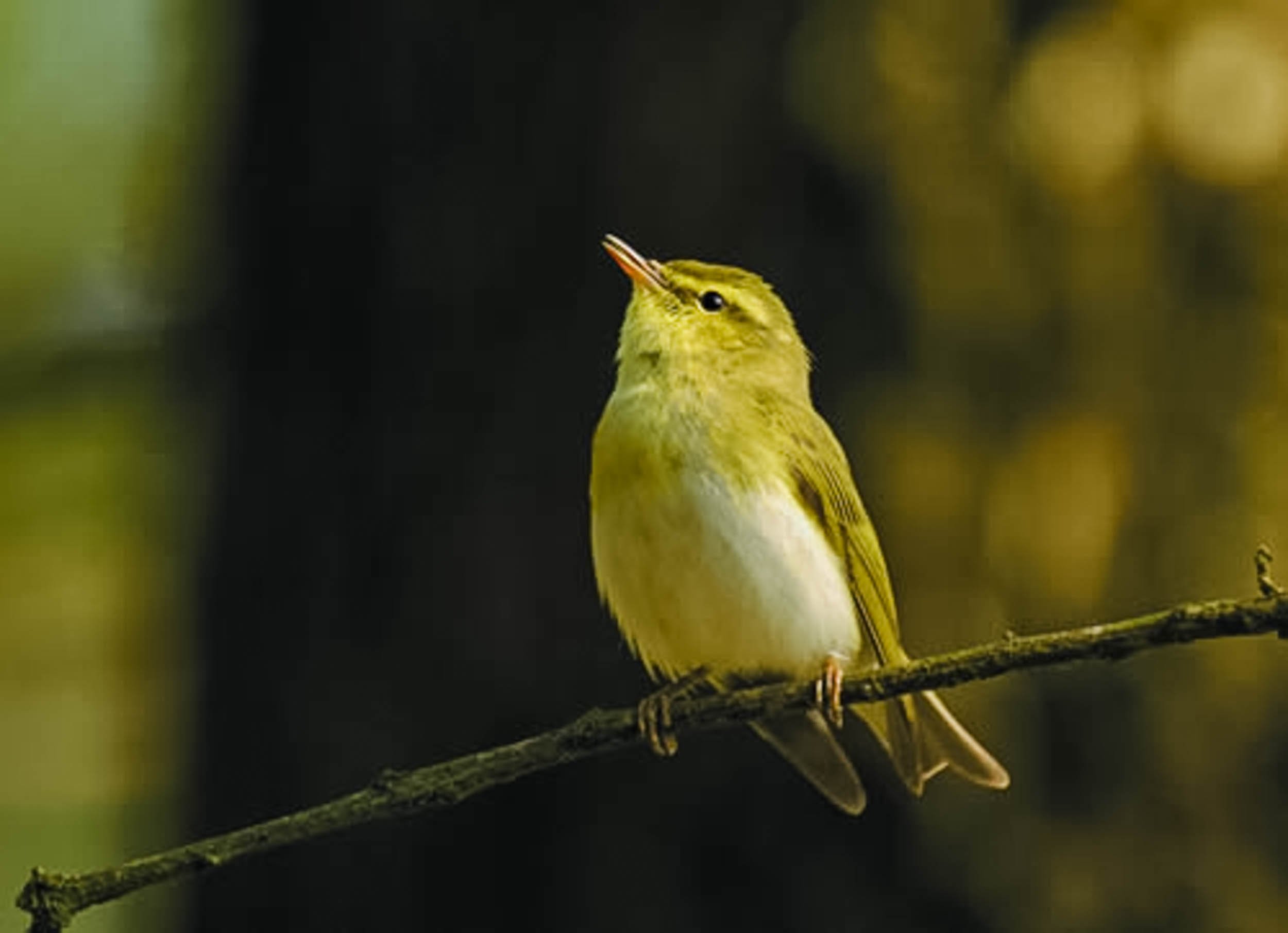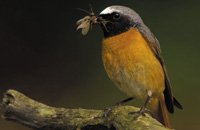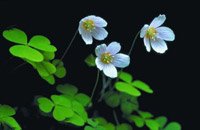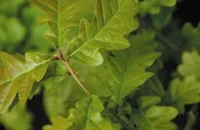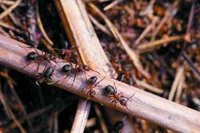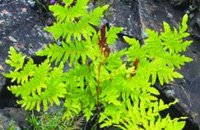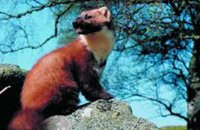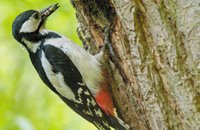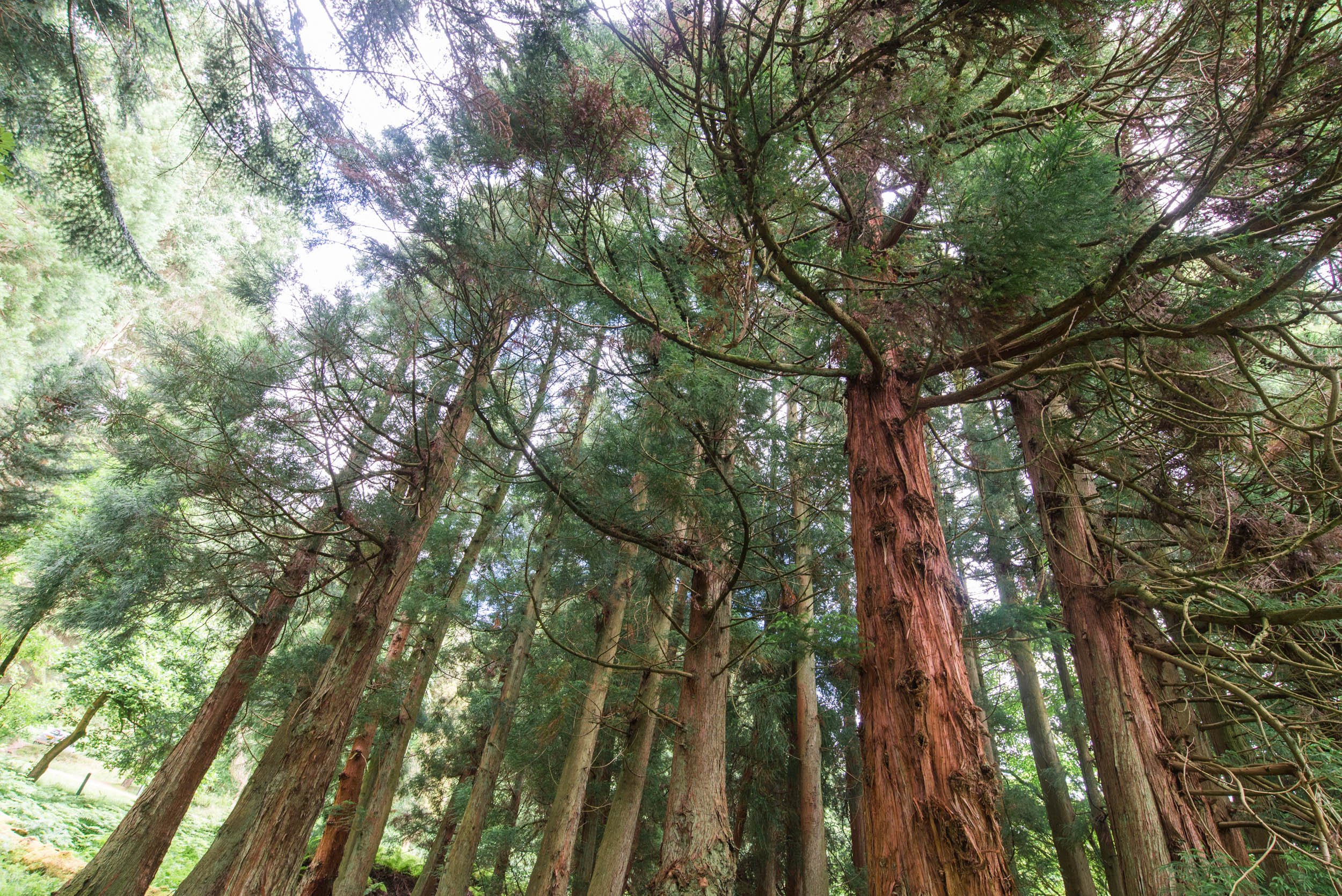
Forests and Woodlands
(Picture: Kilmun Arboretum)
Nature in Loch Lomond & The Trossachs
Most of the Park’s trees have been planted by people over the last 400 years, but the wildlife don’t seem to mind.The oakwoods that line many of our lochs and rivers were planted to provide wood for tanning and smelting, sometimes on top of existing woodlands. The conifer plantations that cloak many of our hills are still felled for timber. Yet they also offer food and shelter for many of our best loved animals and plants.
Perhaps not surprisingly many of the animals that choose to live here are shy and secretive. Look out for their tracks and signs – footprints, scats, and song, for example - when you walk through the woods. You may be rewarded by a glimpse of red squirrels, pine martens, or deer, or hear wood warblers and redstarts up in the tree canopy. Go in spring and what you are sure to see in the oakwoods is a carpet of wildflowers – bluebells, violets or wood anemones – taking advantage of the light before the leaves close in.
The list below will introduce you to some of the wildlife to be found in the Park’s forest and woodland habitats. Click on the names to learn more about them.
-
Latin name: Tetrao tetrix
Length: 40 - 55cm Wingspan: 65 - 80cm
Where: Woodland edges and clearings, for example at Cashel
When: Early mornings in spring are the best time to catch a glimpse of them lekking
Although the male black grouse is as big as a domestic hen it is not a bird we often see. Not only because they are they becoming increasingly rare, but also because they hide themselves away in woodland clearings and forest edges. They feed on the seeds, berries and buds they find there - birch buds are particular favourites - and roost high in the trees.
In early spring however the males throw caution to the wind to strut and pose at mating ‘leks’. Sometimes up to a dozen blackcock dandies gather at dawn to display to the females, flaring their scarlet eye wattles, puffing up their neck feathers and fanning their lyre-shaped tails like peacocks. Their strange, dove-like calls can carry across the fields for 400m, alerting any females to the mating game they are playing.
The females are much less striking – they need colours that help them to camouflage their whereabouts when they are incubating eggs or rearing young. Though harder than the males to distinguish from red grouse, their lack of red ‘eyebrows’ or white feathery stockings, and their different taste in habitat, helps distinguish them.
-
Latin name: Formica acquilonia; F.lugubris; F. exsecta; F. sanguinea
Size: Queens up to 12cm long
Where: Woodlands, especially coniferous woodlands e.g. Falls of Leny woods; Coille Coire Chuilc (Tyndrum)
When: Spring - autumn
The anthills you find in the National Park’s woodlands are every bit as exciting and complex as the African termite hills that feature in so many wildlife documentaries – and they are much more accessible!
All four wood ant species more commonly found in Scotland build these mounds, often out of pine needles. Each is placed painstakingly in its correct position by the worker ants to get maximum benefit from any warmth from the sun. The biggest hills can reach 1m high and 2m across.
The worker ants, which are all female, have short, hard lives. They only survive for a season, and in that time, besides building and maintaining the mound they nursemaid the eggs and ant larvae, and bring all the food into the mound, carrying up to 1.5 times their own bodyweight each day. They kill their prey by shooting it with formic acid. This may play a part in maintaining the ecological balance of the woodland, by keeping down the caterpillars of moths and sawflies that could damage the trees if left unchecked.
The males lives are even shorter. They live only long enough to take flight and fertilise the eggs of the next generation.
By contrast the queens, whose job is to lay all the eggs and keep the colony going, can live for up to 15 years. In some species queens will also fly to the mounds of other species, kill the queens and force the workers to tend her and her young. These species are known as ‘slavemakers’ for obvious reasons!
On bright spring days look carefully at an ant hill and you may notice thousands of the insects congregated on the sunny side of the mound. They really are sunbathing. Once they are thoroughly warmed they will go deep into the heart of the mound and use their body heat to keep the incubating eggs and larvae warm.
Find out more at:
-
Latin name: Sciurus vulgaris
Size: Body length 18 - 24cm plus 18cm tail
Weight: 280 – 350g
Where: Viewing hide at Ardentinny; David Marshall Lodge Squirrel Hide; Woodlands of Strathyre, Lochgoilhead, Ardgarten, Bracklin Falls (Callander)
When: All year round; early morning spring and autumn in the viewing hides
The sight of a red squirrel is all the more exciting now because in many parts of Britain they have been driven out completely by invading grey squirrels or loss of habitat.
The dainty, russet-red animal with the tufted ears and bushy tail was once our only squirrel, before greys were introduced from the USA just over 100 years ago. Bigger, stronger and more adaptable, the greys have rapidly taken over the reds’ habitat and more besides.
Red squirrels feed mainly on conifer seeds. Pine cones are a favourite. If you find a pine cone gnawed like an apple core it’s a good sign there are red squirrels about. They will also eat fungi, fruit, birds’ eggs, and nuts, which they bury in autumn to get them through the winter months. Anyone who has read Roald Dahl’s Charlie and the Chocolate Factory will know they have a special skill – they can tell a good nut from a bad one before they bury it by holding it in their paws and tapping it!
You can see red squirrels all year round. They don’t hibernate, though they may stay huddled in their nests (called dreys) for a number of days if the weather is very cold. A good time to look out for them is when a thaw sets in, when they will start hunting and digging for the food they cached in the autumn.
-
Latin name: Dendrocopus major
Length: 22 - 23cm Wingspan: 34 - 39cm
Where: Inchcailloch; any wooded areas
When: All year round
One of our smartest birds, the great spotted woodpecker is sadly more often heard than seen. The sound it makes as it hammers its beak against dead branches or telegraph poles is described as ‘drumming’ – but it’s nearer to the noise of a miniature pneumatic drill. It beats the trees so hard that it has evolved a pad of absorbent tissue between its beak and its skull to deaden the impact of the 10 - 15 strikes per second it can achieve.
Great spotted woodpeckers prefer mature woodlands where drumming spots are plentiful, and where dead wood provides a home for their favourite food – the larvae of wood-boring invertebrates. If they can’t find enough of these they aren’t fussy eaters – other birds’ eggs or chicks, conifer seeds or bird table scraps are all welcome. Woodpeckers do come to bird feeders, so keep an eye out for them in gardens, particularly going for peanuts.
If you want to see a great spotted woodpecker your best chance is in spring before the leaves appear on the trees. You may then see a flash of its red nape (which means it’s a male) or belly, or the black and white striped wings, as it flies from tree to tree proclaiming its territory.
Find out more at:
-
Latin name: Betula pendula; Betula pubescens
Gaelic name: Beith
Size: Up to 30m tall
Where: Inchcailloch; woodlands and lower mountain slopes around the Park
When: All year round; early spring and autumn for rich colours
The birches’ graceful lines and dainty leaves belie their tough characters. They will grow in places where no other trees can survive.You will see their seedlings sprouting on mountains, heathland, even on bogs, making them the most common native trees in Scotland.
Most people recognise the silver birch – the pearly-white sheen on its peeling, papery bark is unmistakeable. Its small, triangular leaves flutter in the breeze, giving the tree its delicate demeanour. Downy birch is a close relation that often takes over from silver birch in wetter, more western parts of Scotland. It looks very similar, but its bark is less striking, and its leaves more elongated. It gets its name from the soft, hairy stalks and veins on its leaves.
In early spring it is the birch that gives our Scottish woodlands their purple glow, as the fresh twigs and buds emerge. In the past its spring growth was used to predict the weather for the coming summer: if a birch leaf was the size of a ‘mouse’s lug’ by Beltane (1 May) people believed there would be a good harvest to come.
Birches provide food and homes for hundreds of species – mostly invertebrates – 334 at the last count. One of the most important is the argent and sable moth, which lays its eggs on the leaves of the tiny saplings. Birch woods, which cast such light shadows on the woodland floor, are often great places to see spring flowers such as primroses, violets and bluebells, which thrive in the sunny conditions.
To find out more go to:
-
Latin name: Quercus petraea
Gaelic name: Darroch
Size: Up to 40m tall
Where: East Loch Lomond; Glen Finglas; Balquhidder Glen; Loch Earn; Little Drum Wood; David Marshall Lodge; the shore of east Loch Lomond at Balmaha to Rowardenan along the route of the West Highland Way; and Inchcailloch
When: All year round
There are actually two native species of oak in the UK – sessile and pedunculate. Sessile means ‘stalkless’ - the acorns grow straight out from the twigs – while pedunculate acorns have little stalks or ‘peduncles’ attaching them to the small branches.
The spectacular oakwoods of the National Park are mainly made up of sessile oak, which seems to prefer conditions in the north and west of the country. They form one of the largest areas of semi-natural woodland in the UK, and are so valuable for wildlife that they have been given European protection as Special Areas of Conservation.
Walk through an oak woodland at any time of year and you will be surrounded by the colours, sounds and smells of its teeming wildlife. Oak trees can support over 500 species of invertebrates – more than any other UK tree species – though many will be hidden out of sight under the bark or in the leaf litter. But you will see the many lichens, mosses and fungi which drape the trees in greys, yellows, greens, oranges, reds and even purples, especially in autumn, the height of the fungi year.
Oaks don’t come into leaf until late in May, so in spring the woodland floor will be awash with wild flowers, scenting the air with their delicate perfumes, taking advantage of the sun before the leaves shade them out. In summer you can hear rarer, visiting birds like redstarts, wood warblers and pied flycatchers joining the dawn chorus of our year-round birds. Even in winter the woodlands provide a refuge for wildlife, sheltering deer and red squirrels, and in a good year providing acorns to keep them going during the lean months.
Find out more at:
-
Latin name: Capreolus capreolus
Height: 60 -75cm (buck) at shoulder
Weight: 10 – 25kg
Where: Balmaha woods; Balloch Castle Country Park; East Loch Lomond Woods; Aberfoyle; Port of Menteith
When: All year round, but often easier to see in winter, and at dawn and dusk
If you take a stroll through the woods and catch sight of a small deer with a white rump it’s likely to be a roe deer. They are the smallest of our native deer – half the size of their cousins the red deer. And unlike the reds they tend to prefer their own company rather than hanging round in herds.
If you get a good look you may pick out its kohl-black nose, and a chin that looks like it has been dipped in milk. Their muzzles are short, pointed and rather dog-like – an impression strengthened if you hear them bark in alarm.
In winter they exchange their glowing, russet-brown summer coat for a heavier grey number – some even favour a sooty black version – though they never lose that white rump. Only the males (known as bucks rather than stags) have antlers. They grow a fresh pair every winter in readiness for the summer rut, when the antlers play a key part in the males’ courtship. Once the new antlers stop growing the bucks rub them hard against tree branches to remove the itchy velvet that covers them as they grow. The mangled branches are often a good clue that the deer are not far away.
Find out more at:
-
Latin name: Phoenicurus phoenicurus
Length: 14cm Wingspan: 20.5 - 24cm
Where: Inchcailloch; Glen Falloch; any open deciduous woodland
When: Late spring and summer
The ‘start’ in redstart comes from the Old English ‘steort’, meaning ‘tail’ – often all you will see of these shy birds as they flit among the trees. If you do get a good look at one you will find that a male redstart looks a bit like an outlaw robin – the same rusty-red breast, but wearing a full black mask over its face and neck. As befits a renegade it also looks longer and leaner than our round, cuddly, garden robin.
Glen Falloch is a good place to find them among the old sessile oak woods. Because they feed on insects they are only here in the summer. Once the autumn chill arrives the lack of food drives them back to sub-equatorial Africa for the winter months.
Find out more at:
-
Latin name: Pinus sylvestrisScots pine
Gaelic name: Guibhas
Size: Up to 80m tall
Where: Inchcailloch; Glen Falloch – north of Derrydarroch cottage; Coille Coire Chuilc
When: All year round
You may be surprised to find out that our own Scots pine is actually the most widely distributed conifer in the world – growing in places as far apart as southern Spain and northern Scandinavia, and from Scotland to Siberia.
Mature Scots pines are trees of character. Their high, spreading branches, ruddy, gnarled and fissured bark, and velvet-green needles are a world away from the uniform columns of conifer plantations. Some have even become celebrities – like the Fairy Tree near Aberfoyle, which is said to harbour the spirit of the Reverend Robert Kirk, who was abducted by fairies in 1692!
Pine forests provide shelter and food for many of Scotland’s most iconic species – capercaillie, black grouse, wild cat, pine marten and red squirrel, for example. In medieval times pine forests stretched across most of the Highlands. Sadly there is now only 1% of the original forest still standing. The rest has been felled over the centuries for man’s use. The trees have found it hard to regenerate on their own because of the many sheep and deer that now graze the hillsides where the forests once stood, eating the young trees before they can get established. With the loss of the forest has come declines in many of the species that rely on them.
Happily, Scots pines are now being replanted all across Scotland in an attempt to bring back at least part of the Great Forest of Caledon.
To find out more go to:
-
Latin name: Hyacinthoides non-scripta
Gaelic name: Bròg na chutais; Fuath-mhuc
Size: Up to 30cm tall
Where: Inchcailloch probably has one of the best displays in the National Park
When: May for flowers
We should never take our bluebell woods for granted. People come from thousands of miles away to see them. Britain has at least a quarter of the entire world population of this little blue flower, which grows in such profusion here that our woodlands are awash in a sweet smelling sea of blue for most of May.
It’s actually the humidity, rather than the woodlands, that bluebells love. If conditions are right you are just as likely to see them on sea cliffs or brackeny hillsides. Because they are so widespread and profuse they provide a valuable food source for bees at the time when many of the queens emerge looking to start new colonies.
Bluebells also hold a special place in people’s lives. Perhaps that’s the reason they have two Gaelic names. One, ‘bròg na chutais’, means ‘cuckoo’s shoes’ – probably because both species appear in our lives at about the same time of year. The other, ‘fuath-mhuc’, literally means ‘the thing the pigs dislike’! Pigs were traditionally grazed in woodlands, and they go out of their way to avoid eating bluebells – the bulbs of which are poisonous.
Sadly some bluebell woods are now under threat because criminals dig up the bulbs to sell to unwitting gardeners – an unwanted side-effect of the increasing interest in growing wildflowers in our gardens. If you do want your own sea of blue make sure you buy your bulbs from a certified source.
Find out more at:
-
Latin name: Martes martes
Size: Body up to 53cm long, tail up to 25cm long
Where: Pine woodland; the Trossachs pine forests or David Marshall Lodge hides
When: Evenings or sometimes during the day at quiet times
Wily pine martens are elusive animals, and you are often more likely to see their tracks or scats than the animals themselves. However they can be tempted to show themselves at feeding stations, so the hides at David Marshall Lodge are a great place to go for a glimpse of these beautiful chocolate brown and cream relatives of the stoat and weasel.
As their name suggests their favourite habitat is a pine wood, where they make their homes in tree hollows or old squirrel dreys. They mostly venture out a night to feed on small mammals, birds, eggs or berries, according to the season. In autumn a tell-tale sign of their presence is the purply-blue scats they leave behind after feasting on blaeberries. In winter the best clue is often the distinctive tracks they leave in the snow. In firm snow these pawprints are about 4-5cm long, and often appear in groups of two or three as the marten jumps and bounds over the ground.
Loss of habitat and persecution nearly drove pine martens to extinction during the 20th century. Happily the changing attitudes of land managers and better legal protection has meant they are now making something of a comeback, thanks partly to the efforts of conservation organisations in Scotland.
Find out more at:
-
Latin name: Ficedula hypoleucapied flycatcher
Length: 13cm
Where: Mostly oak woodland; Inversnaid Nature Reserve; Ross Wood
When: April to July
The dapper little pied flycatcher is a relative newcomer to the National Park, only beginning to breed here in the 1960s. Its name gives a perfect description – a striking black and white bird that darts from its perch to snatch flying insects. Like many birds it’s only the male that has the smart suit. The females prefer to dress down in shades of brown and grey to make themselves less visible while they are sitting on the nest.
Pied flycatchers come here to breed in spring, flying thousands of miles from their winter quarters south of the Sahara in West Africa. Their favourite summer haunts are our cool, leafy sessile oakwoods, where they nest in old, hollow trees. These nest sites have become harder to come by over the last century, but a nest box scheme in the Park has helped increase their numbers. To have the best chance of spotting one you need to be quick – by July most of the birds leave their breeding territories to start their journey back to Africa once more.
Find out more at:
-
Latin name: Phylloscopus sibilitrix
Length: 12cm Wingspan: 19.5 - 24cm
Where: Broadleaved woodland; East Loch Lomond; Falls of Falloch; Inchcailloch
When: April to August
Wood warblers are elusive birds. Delicately coloured in mossy green and lemon, they blend perfectly with the spring leaves of the cool, damp oak and beech woodlands where they make their summer home. They stay high up in the branches, revealed only by their distinctive, double-versed song. Sometimes it’s hard to believe that it is not two species singing high in the tree canopy – one giving a melancholy whistle, the other a merry trill – but it is indeed only the wood warbler torn between sadness and joy.
Their Latin name, ‘phylloscopus’, means ‘leaf searcher’ – aptly describing the way they rifle through the leaves finding small insects and spiders. Like many insect-eating birds they can only stay in this country during the summer, returning to sub-Saharan Africa in August before the autumn frosts kill off their food supply.
Find out more at:
-
Latin name: Viola riviniana
Size: Flower stems up to 10cm tall
Where: Inchcailloch; woodlands and hillsides
When: Spring to early summer for flowers
There are actually more than a dozen species of violets in the UK – not to mention the hybrids – but nine out of ten of those we see are likely to be the common dog violet. We think of them as woodland flowers but these shy harbingers of spring crop up in the most unlikely places, including high in the mountains and on craggy outcrops.
Sadly the dog violets lack the beautiful perfume of the much less common sweet violet (Viola odorata), which the Victorians loved so much. But if you spot their warm, deep purple or mauve flowers on a cold, grey spring day you can forgive them that.
There are also a few animals that are especially pleased when they find these delicate flowers. Common dog violets are the food plant for the caterpillars of a number of fritillary butterflies, including the small pearl-bordered and pearl-bordered fritillaries. Without the violets these beautiful and declining butterflies would disappear.
-
Latin name: Allium ursinumRamsons
Where: Mostly in deciduous woodland, for example on Inchcailloch
When: Flowers in May
A plant you smell before you see! Its garlicky reek wafts through the trees in the woodlands where it blooms in profusion. The beauty of its starry flowers, held in a bunch at the top of a single stem, belies its exotic smell. It flowers at roughly the same time as the more fragrant bluebell, and a woodland walk may take you though alternating carpets of blue and white, sweet-smelling and pungent. They rarely grow together.
Both the long, strap-like leaves and flowers make good eating. The former gives a mild, garlic flavour to a salad, while the blooms add both a decorative touch and a powerful punch. In fact people have been eating wild garlic for thousands of years. A carbonised bulb was found in the National Park at Fairy Knowe broch near Aberfoyle!
